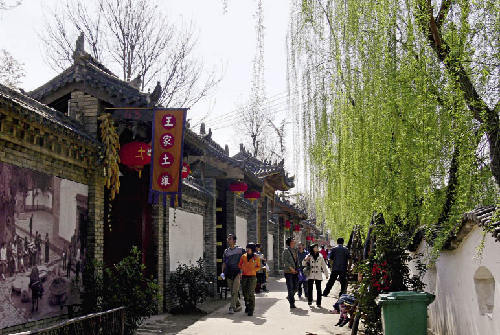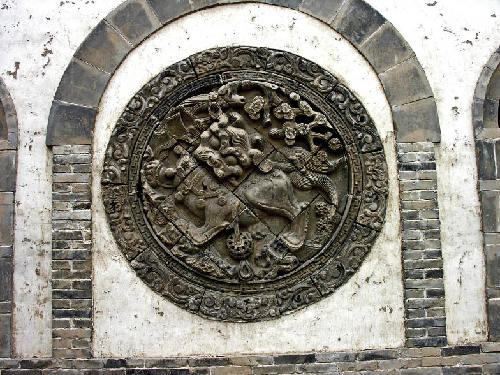By JIA MING

Visitors wander along a leafy Yuanjia Village lane
By JIA MING

Visitors wander along a leafy Yuanjia Village lane
GUANZHONG is a region with a colorful history. It refers to the Guanzhong Plain in Shaanxi Province, where the cities of Baoji, Xianyang, Xi’an, Tongchuan and Weinan are located. The area highlights the time-honored civilization of the middle reaches of the Yellow River and represents the folk culture of Shaanxi Province.
Yuanjia Village of Liquan County is situated in the heart of the Guanzhong Plain. The village is surrounded by a good number of cultural attractions. One of the largest imperial mausoleums in the world, Zhaoling, the tomb of Tang Emperor Li Shimin (599-648) is located just one kilometer from it and was enlisted among the first batch of heritage sites under state protection. Also in its vicinity is Jianling, the burial ground of Emperor Li Heng (711-762), which holds the largest number of and the most intact stone engravings among the imperial mausoleums scattered across the Guanzhong Plain. With the restoration of antique buildings and old customs over recent years, Yuanjia Village is itself a showcase of the Guanzhong culture.
Busy Old Streets
This was my second trip to Yuanjia Village. I had learned a lot from my first visit and was determined to come back again. But even after this second visit, I had a thirst for more.
A straight road lined with trees and ancient-style lamps leads to the village. The community resembles the old town of Lijiang in Yunnan Province with its narrow streets, tile-roofed houses and small canals. But in contrast to the brilliant colors I had seen in Lijiang, the dominant colors of Yuanjia were earthy yellow, gray and white. Large flags outside shops bearing the Chinese characters for “noodles,” “fabrics” or “vinegar,” for example, fluttered in the breeze. The mingling aroma of liquor, vinegar and tofu wafted along the main street, making my mouth water.

An ancient wall relief.